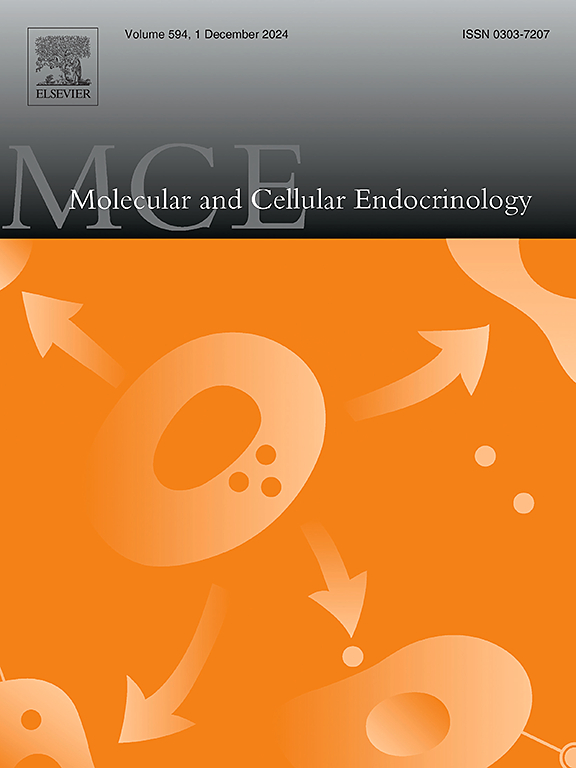The lysosome-associated SLAMF7 inhibits the development of ovarian cancer by promoting lysosomal damage
IF 3.6
3区 医学
Q2 CELL BIOLOGY
引用次数: 0
Abstract
Ovarian cancer (OC) is one of the most severe cancers worldwide. Recent research suggests that the lysosomal pathway could be applied for early disease screening, prognosis evaluation, and adjuvant therapy. However, whether lysosome-related genes were applied for immune and prognosis prediction in OC remains unclear. RNA sequencing datasets, including clinical information of OC patients, were collected from TCGA and GEO databases. Lysosome-related prognostic genes and functional pathways in OC were identified using the lysosome dataset. The prognostic value of the most significant lysosome-related gene, SLAMF7, was estimated using Kaplan-Meier survival analysis. Differences in genomic mutations, tumor microenvironment immune infiltration, and drug resistance were evaluated in the high/low SLAMF7 of OC patients. The effect of SLAMF7 overexpression on the malignant characteristics of OC was assessed using OC cell lines (HEY A8 and OVCAR3 cells) and a xenograft mouse model. Based on the functional prediction of lysosome-related genes, T cell activation, immune receptor activity, and lysosomal pathways were significantly enriched in OC. Dimensionality reduction analysis using the random survival forest method confirmed that SLAMF7 was the most significantly different lysosome-related prognostic gene in OC. SLAMF7 was downregulated in OC cells and was associated with poor prognosis in OC patients. Low SLAMF7 expression was positively associated with chemotherapy sensitivity, immune infiltration, and function in OC patients. Overexpression of SLAMF7 promoted the pro-CTSB and LAMP1 expression, and inhibited CTSD expression in HEY A8 and OVCAR3 cells. Overexpression of SLAMF7 inhibited proliferation and formation of subcutaneous tumors in nude mice. The lysosome-related gene SLAMF7 is downregulated in OC and could serve as a prognostic biomarker. Overexpression of SLAMF7 inhibited the malignant of OC cells and tumor formation.

溶酶体相关的SLAMF7通过促进溶酶体损伤来抑制卵巢癌的发展。
卵巢癌(OC)是世界上最严重的癌症之一。近年来的研究表明,溶酶体途径可用于早期疾病筛查、预后评估和辅助治疗。然而,溶酶体依赖的死亡相关基因是否用于卵巢癌的免疫和预后预测仍不清楚。RNA测序数据集,包括OC患者的临床信息,收集自TCGA和GEO数据库。使用溶酶体数据集确定OC中与溶酶体相关的预后基因和功能途径。最重要的溶酶体相关基因SLAMF7的预后价值是用Kaplan-Meier生存分析估计的。评估肿瘤患者高/低SLAMF7水平在基因组突变、肿瘤微环境免疫浸润和耐药性方面的差异。通过OC细胞系(HEY A8和OVCAR3细胞)和异种移植小鼠模型评估SLAMF7过表达对OC恶性特征的影响。根据溶酶体相关基因的功能预测,T细胞活化、免疫受体活性和溶酶体途径在OC中显著富集。随机生存森林法降维分析证实,SLAMF7是OC中差异最显著的溶酶体相关预后基因。SLAMF7在OC细胞中下调,与OC患者预后不良相关。在OC患者中,SLAMF7的低表达与化疗敏感性、免疫浸润和功能呈正相关。在HEY A8和OVCAR3细胞中,过表达SLAMF7促进了ctsb和LAMP1的表达,抑制了CTSD的表达。过表达SLAMF7可抑制裸鼠皮下肿瘤的增殖和形成。溶酶体依赖性死亡相关基因SLAMF7在OC中下调,可作为预后生物标志物。过表达SLAMF7抑制OC细胞的恶性和肿瘤的形成。
本文章由计算机程序翻译,如有差异,请以英文原文为准。
求助全文
约1分钟内获得全文
求助全文
来源期刊

Molecular and Cellular Endocrinology
医学-内分泌学与代谢
CiteScore
9.00
自引率
2.40%
发文量
174
审稿时长
42 days
期刊介绍:
Molecular and Cellular Endocrinology was established in 1974 to meet the demand for integrated publication on all aspects related to the genetic and biochemical effects, synthesis and secretions of extracellular signals (hormones, neurotransmitters, etc.) and to the understanding of cellular regulatory mechanisms involved in hormonal control.
 求助内容:
求助内容: 应助结果提醒方式:
应助结果提醒方式:


